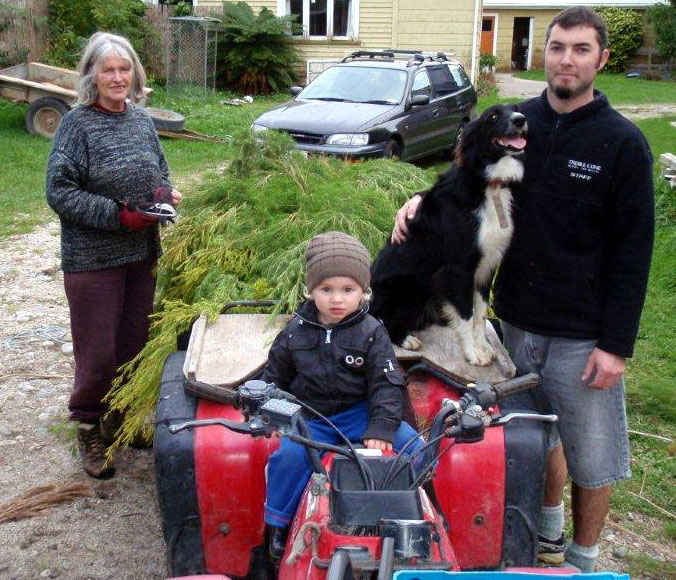From Bayley’s lifestyle magazine ‘Country’ Autumn 2011.
Hamish and Margaret of Karamea on the South Island’s semi-tropical northern West Coast have always had great childhood memories of time spent away from their home base of Christchurch. “When we were kids we’d be taken to the Marlborough Sounds for summer holidays and Arthur’s Pass in the winter – we loved it,” says Hamish. “It was the same in Margaret’s family. So one day it occurred to us to do things the other way around. Why not live most of the time in a beautiful rural environment and come to the city when we had to?”
In order to do so, the Macbeths had to challenge a few assumptions, starting with expectations they hold down conventional professional jobs in the city. But not to do so, Hamish and Margaret have found, is more than okay. What they have gained instead, Hamish says, is a lifestyle in a strikingly beautiful, largely uninhabited natural environment. Proceeds from their land-based cottage industries situated by the adjacent Otumahana estuary “almost pay” for the privilege.
The Macbeths have lived near or beside the rugged, white-sand coastline for what’s quickly become a couple of decades. And although they currently dwell on a diminutive lifestyle block of three hectares, it’s so diversified that each day’s activities are far from prescribed. “Every single morning I wake up and try to work out what I’ll do today,” Hamish says.
The possibilities involve any given process in the care and (organic) harvest of feathery Australian Tea Tree. One of their certified organic hectares is planted in this. It grew from Margaret’s order, years ago via a friend, of 3000 seedlings. The crop, which is the only example of it this side of the Tasman, has maintained organic certification since the mid‘90s and is hand-harvested on a two-yearly rotation.The couple have developed a range of tea tree oil-based products which are sold both internationally via the web and through most organic retail outlets in New Zealand.The other two hectares feature 500 feijoa bushes, plus an extensive vegetable garden, shade house, a domestic orchard of apples and pears and a wood lot. Then there are bee-hives for rata and manuka honey, 30 or so home-grown chooks, sheep, ducks, a dog and two cats.
Add the occasional stays from ‘woofers’ – (willing workers on organic farms) – and the life is varied and full.
Hamish generally rises at around 6.30 am and wonders whether to light the fire for distillation purposes, or whether there’s a more pressing need in fulfilling orders with organic farmers. Margaret, a keen gardener, maintains the horticultural integrity of the farm, amidst other necessary activities.
“I’ve realised that I never had a burning ambition to be a ‘somebody’ or make lots of money, “ Hamish says “ But I’ve discovered what I did need to be happy is a beautiful environment and a good balance of outdoor physical work and indoor paperwork.“The lifestyle is the big attraction, and what you find is that people who live here are correspondingly characterful; albeit a tad wild or cowboyish maybe. We have lots of people popping in to chat or to buy something and we try to make time for that,” he adds.
The couple relish living at the “end of the road,” with a wonderful 180 degree view of the estuary in one direction, a rata forest in another, and the Karamea bluffs in yet another. Life is pretty near perfect.




